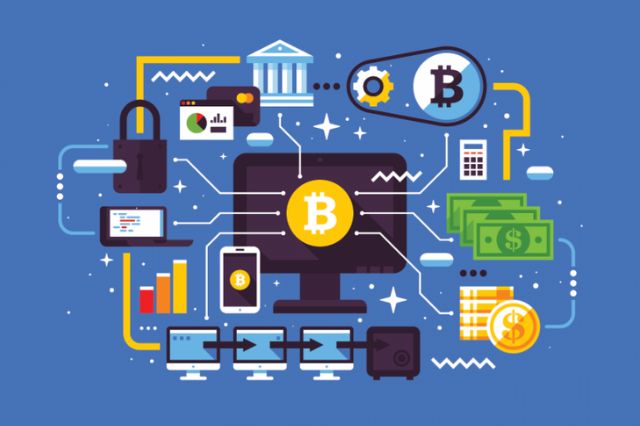In the realm of technological advancements, blockchain technology has undeniably taken center stage. From cryptocurrencies to supply chain management, this distributed ledger system has revolutionized various industries, earning widespread popularity and recognition. But what exactly makes blockchain technology so sought after? And how can you determine if an application truly needs blockchain? Let’s delve into these questions and explore the fascinating world of blockchain app development.
The Rise of Blockchain
Forecasts suggest that the global blockchain technology market is expected to climb to over 39 billion U.S. dollars in size by 2025. Blockchain technology has gained immense popularity due to its unique features and capabilities. Here’s why it has become the talk of the town:
Decentralization: One of the key aspects of blockchain technology is its decentralized nature. Instead of relying on a central authority, it operates on a distributed network of computers, ensuring transparency and removing the need for intermediaries.
Immutable Ledger: Blockchain’s immutable ledger ensures that once data is recorded, it cannot be altered or tampered with. This feature adds an extra layer of security and trust to transactions and records.
Enhanced Security: Blockchain employs cryptographic techniques that secure data and transactions, making it extremely difficult for malicious actors to manipulate or hack the system.
Smart Contracts: Smart contracts are self-executing contracts embedded within the blockchain, eliminating the need for intermediaries and automating various processes. This feature streamlines operations and reduces costs.
Determining the Need for Blockchain

Not every application requires blockchain technology. So, how can you assess if a particular application can benefit from blockchain? Consider the following factors:
Transparency and Trust: If the application involves multiple parties that lack trust or transparency, blockchain can provide an immutable and transparent record of transactions and interactions.
Intermediary Elimination: Does the application involve intermediaries, such as brokers or agents? If so, implementing blockchain can help streamline processes, reduce costs, and remove the need for intermediaries.
Data Security and Integrity: If the application deals with sensitive data that requires enhanced security and integrity, blockchain’s cryptographic techniques can offer a robust solution.
Diverse Types of Blockchain Applications
Blockchain technology finds application in various domains. Here are some notable examples:
Cryptocurrencies: The advent of Bitcoin sparked the popularity of blockchain. Cryptocurrency utilizes blockchain to enable secure, decentralized, and transparent digital transactions.
Supply Chain Management: Blockchain enables end-to-end traceability and transparency in supply chains, reducing fraud, counterfeiting, and ensuring ethical sourcing.
Healthcare: Blockchain applications in healthcare ensure secure and interoperable storage of patient records, efficient drug traceability, and streamlined medical research.
Voting Systems: Blockchain can enhance the security, transparency, and integrity of voting systems by ensuring tamper-proof records and preventing fraud.
Benefits of Blockchain Applications
Implementing blockchain technology brings forth numerous advantages:
Enhanced Security: The cryptographic algorithms used in blockchain technology make it highly secure, reducing the risk of unauthorized access or data manipulation.
Transparency and Trust: Blockchain’s transparent nature allows all participants to view and verify transactions, fostering trust and eliminating the need for intermediaries.
Efficiency and Cost Reduction: Blockchain streamlines processes, automates tasks through smart contracts, and removes the need for intermediaries, leading to improved efficiency and reduced costs.
Data Integrity: The immutability of blockchain ensures the integrity and accuracy of stored data, reducing the risk of fraud or tampering.
Developing a Blockchain Application
Developing a blockchain application may seem daunting, but by breaking it down into steps, the process becomes more manageable:
Define the Use Case: Identify the problem your application aims to solve and determine how blockchain can address it effectively.
Choose the Blockchain Platform: Select a suitable blockchain platform based on your specific requirements, such as scalability, consensus mechanism, and smart contract capabilities.
Design the Application Architecture: Create a detailed plan for the application’s architecture, including the data structure, smart contract design, and user interface.
Develop Smart Contracts: Write the smart contracts that will govern the rules and logic of your application. Use programming languages like Solidity or Vyper, depending on the blockchain platform.
Build the Backend: Implement the necessary infrastructure to support the application, including nodes, wallets, and APIs.
Create the Frontend: Develop an intuitive and user-friendly interface for your application, allowing users to interact with the blockchain.
Test and Deploy: Thoroughly test the application for bugs, vulnerabilities, and performance issues. Once satisfied, deploy the application to the blockchain network.
Monitor and Maintain: Continuously monitor the application, address any issues or updates, and ensure its smooth operation over time.
Conclusion

Blockchain technology has emerged as a game-changer, revolutionizing various industries with its decentralized, transparent, and secure nature. By evaluating the need for blockchain and harnessing its potential, organizations can unlock numerous benefits, from enhanced security and trust to streamlined processes and cost reduction. Developing a blockchain application may require careful planning and technical expertise, but with the right approach, it can pave the way for innovation and efficiency.
As blockchain technology continues to evolve and find new applications, its impact on industries and society is bound to expand. So, whether you’re considering implementing blockchain or simply curious about its potential, understanding its popularity and the steps involved in developing a blockchain application will empower you to navigate this exciting digital landscape with confidence. Embrace the blockchain revolution and unlock the possibilities it holds for the future.
Remember, the world of blockchain is constantly evolving, and staying informed and adaptable is key to harnessing its full potential. So, stay curious, explore new horizons, and embrace the power of blockchain technology!
